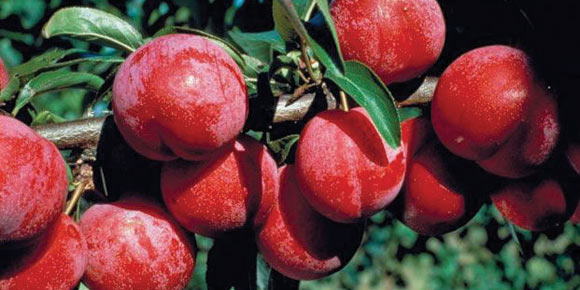The first hint that wild plums grow in Manitoba came to me when I heard the intriguing name of the town, Plum Coulee, population 800. Apparently, it was so named for the wild plums that grew along both sides of the creek flowing through town back in 1888 when the CPR made it an important terminus along its line.
Wild plums, Prunus nigra, do indeed inhabit our province. Our little wild plum, commonly known as Canada plum, has reddish fruit that is somewhat sour but very juicy. It grows across eastern Canada and it is said that Jacques Cartier was offered dried Canada plum when he reached the St. Lawrence.
Canada plum has a pleasing form with somewhat upward-reaching, narrow-headed branches. Preferring to grow in shade to part shade, it is literally covered in blossoms in springtime before its leaves appear. Its Latin name, Prunus nigra (nigra meaning black), was given for its dark branches.
Perhaps one of the greatest virtues of this tree is its ability to be a successful pollinator for hybrids that require cross pollination.
Popular among gardeners in this part of the world is the Pembina plum, a cross between the Canada plum and the Asian plum, Prunus salicina. Its fragrant white flowers are perfectly compatible with the Canada plum, both of which blossom in May followed by forest green leaves that turn yellow in fall. Hardy all the way to zone 2b, the Pembina plum produces heavy crops in alternate years. The dark red fruit, occurring in late summer, has a sweet yellow flesh that is delicious eaten out of hand and excellent for making jams and jellies.
The tree is a good choice for city gardens as it grows to a height and spread of 15 to 20 feet with a medium growth rate and lives up to 40 years.
Today, there are many plum varieties from which to choose, crosses that include Prunus americana, native to this continent, Prunus domestica, the European plum or Prunus salicina, the Japanese or Asian plum.
Plums are thought to be the very first fruit that was domesticated and they have a long and distinguished history worldwide. They are one of the official flowers of China where the Chinese make a salted dried plum called hua mei that is a popular snack food in Hawaii. The taste is sweet, sour and salty. Plum skins pickled with licorice are also ground into a red powder that is sprinkled on candy or fruit.
Plum brandy is common in Eastern Europe. A plum with black skin, Prunus spinosa, also called sloes is used to make sloe gin. This is a plum that grows on a prickly shrub that was used to fence cattle. In ancient times, sloe juice was used to make ink and as a dye. Sugar plums, on the other hand, have nothing to do with plums. Sugar plums were made by surrounding a caraway seed or an almond with layers of hardened sugar using a method called panning, the same method that was used in creating jawbreakers. I suppose you could also coat plums with sugar but that is not what was meant in the traditional Night before Christmas poem.
Plums are high in fibre, beta-carotene, boron and potassium. They are very good sources of vitamins A, B1, B2, B3, B6, E and K. Like most blue and red fruits, they are chockfull of anti-oxidants, and are touted as a cure for a myriad of ailments from anxiety to weight loss to cholesterol reduction. Simple fact: Plums are good for you, but each one contains about 23 calories so dieters be warned.



